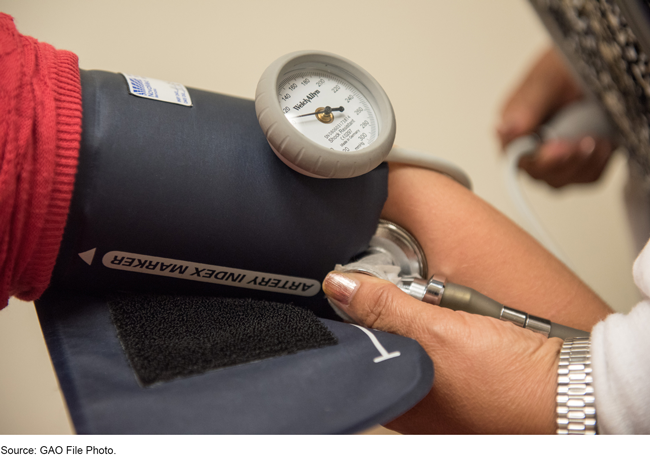Nurse Corps Loan Repayment Program: Too Early to Determine Effects of Allowing Recipients to Serve at For-Profit Facilities
Fast Facts
Certain nurses who agree to work in facilities with critical nurse shortages may receive loan repayments through a federal program. A requirement to work at nonprofits to qualify was dropped in 2020.
What have been the effects of eliminating this restriction?
It's too early to tell. Funding decisions for the first group won't be completed until September 30 and those nurses won't start the program until later.
Representatives of for-profits said this would route nurses to areas of greatest need. Representatives of a two rural nonprofits said they can't offer the wages and bonuses that for-profits can and struggle to recruit and retain nurses.

Highlights
What GAO Found
The Health Resources and Services Administration (HRSA), within the Department of Health and Human Services, manages the Nurse Corps Loan Repayment Program (LRP). The program provides educational loan repayments for registered nurses and other nursing professionals in exchange for their service in a critical shortage facility (CSF)—a facility that is located in or designated as a health professional shortage area. From October 2007 to March 2020, recipients of the Nurse Corps LRP could not fulfill their required program service by working at for-profit CSFs. The CARES Act eliminated this restriction in March 2020, allowing recipients of the LRP to serve in either nonprofit or for-profit CSFs.
To manage the program, HRSA has processes in place to communicate program information to applicants and to verify information, such as an applicant's eligibility, loan information, and proof of employment in an eligible CSF. HRSA also conducts annual evaluations to monitor the effects of the program and issues an annual report to Congress. These reports describe the program's results, such as the number of applications, number of recipients and loan repayments, number and placement locations of the Nurse Corps LRP recipients, and recipients' demographics.
It is too early to determine the effects of allowing loan recipients to fulfill their service commitment at a for-profit CSF. Funding decisions for the first group of applicants that may serve in for-profit CSFs will not be completed until September 30, 2021. Selected applicants will begin their 2 years of service and start working in designated CSFs in late 2021. According to HRSA officials, they plan to examine the effects of allowing service in for-profit facilities in future annual program evaluations, with the first set of results expected in fiscal year 2022.
Officials associated with for-profit and nonprofit CSFs had opposing views about the possible effects of the elimination of the for-profit restriction. Officials from an association representing for-profit CSFs stated that eliminating the restriction could provide an incentive for nurses to work in areas with the greatest need, regardless of whether a CSF is for-profit or nonprofit. Officials from a nonprofit critical access hospital and its associated nonprofit rural health clinic told GAO they were concerned that for-profit CSFs may have financial advantages over nonprofit CSFs. They stated that these financial advantages, such as a higher wage rate, could make for-profit CSFs more attractive to program participants, resulting in fewer nurses willing to work at nonprofit CSFs in rural or other underserved areas.
Why GAO Did This Study
The supply and retention of registered nurses is uneven across the country, with shortages in rural and other underserved areas. These shortages are exacerbated by other challenges, such as lower numbers of nursing students who want to work in rural or other underserved areas.
To help address this problem, HRSA's Nurse Corps LRP provides nursing school loan repayments for registered nurses and other nursing professionals who work in underserved areas. From fiscal year 2016 through fiscal year 2020, 4,156 Nurse Corps LRP awards were distributed.
Congress included a provision in the CARES Act for GAO to review the Nurse Corps LRP. This report describes (1) how HRSA manages the program, and (2) what is known about the effect on CSFs of eliminating the for-profit restriction.
GAO reviewed the CARES Act and other related statutory provisions, as well as HRSA documents, including application and guidance information, information verification, annual reports to Congress, and other program-related documents.
GAO also interviewed HRSA officials about their management of the program, and officials from two nonprofit CSFs and one stakeholder group that represented for-profit hospitals that are CSFs to obtain a variety of perspectives on the elimination of the for-profit restriction.
The Department of Health and Human Services provided technical comments on a draft of this report, which GAO incorporated as appropriate.
For more information, contact Michelle B. Rosenberg at (202) 512-7114 or RosenbergM@gao.gov.
